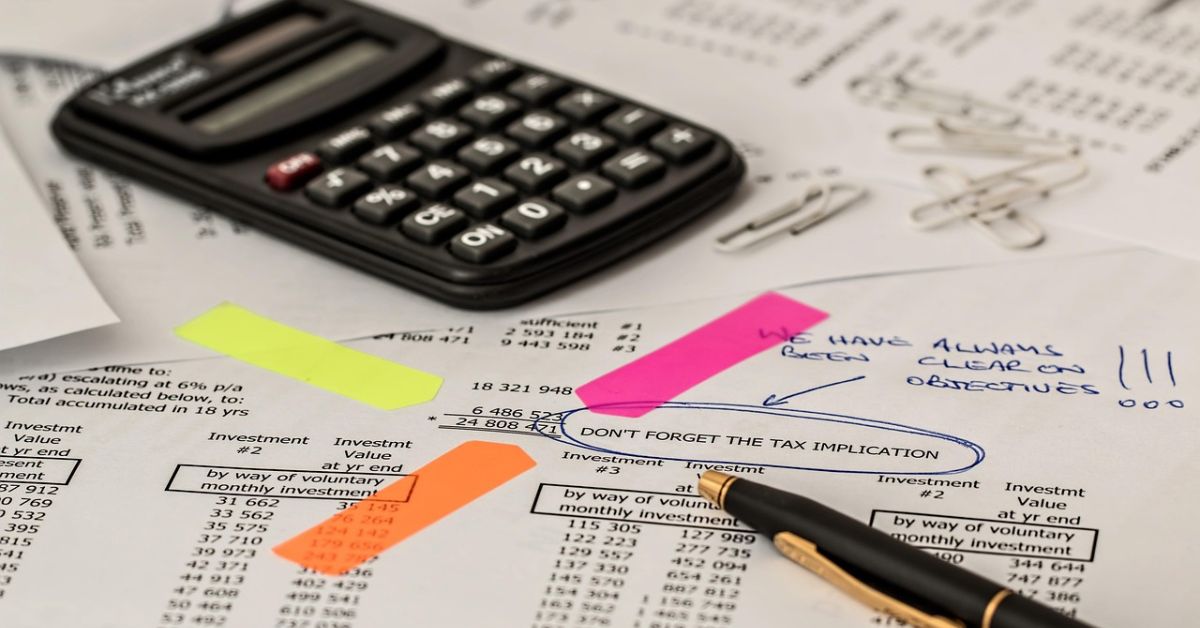So, you’re running a business that uses fuel, and you’ve heard whispers about fuel tax credits. It sounds like a good way to get some money back, right? Well, that’s where a fuel tax credit calculator comes in handy. Think of it as your personal assistant for figuring out if you’re owed a refund from the government for the fuel you’ve used for business purposes. It takes the guesswork out of a pretty complicated system.
Introduction To The Fuel Tax Credit Calculator: What It Does And Why It Matters
Essentially, this calculator helps you determine how much you can claim back on fuel excise duty. This is important because, let’s face it, fuel costs can really add up, especially if you’re driving a lot for work. Getting a credit back can make a noticeable difference to your bottom line. It’s not just about cars, either; it can apply to a range of vehicles and machinery used in various industries.
Here’s a quick rundown of what the calculator helps you do:
- Identify potential claims: It helps you see if the fuel you’re using for eligible business activities qualifies for a credit.
- Estimate your refund: You can get a ballpark figure of how much money you might be able to claim back.
- Understand the basics: It can give you a clearer picture of the rules and requirements involved.
The fuel tax credit system exists to level the playing field for businesses that pay fuel excise duty but use that fuel for purposes other than on-road transport. Without it, businesses would be unfairly burdened by taxes on fuel used for things like powering machinery or heating premises.
Using a calculator simplifies the process of checking your eligibility and estimating your claim. It means you don’t have to be a tax expert to figure out if you’re entitled to a refund. It’s a tool designed to make claiming what you’re owed a bit more straightforward.
Basics Of Fuel Tax Credits: Key Concepts Underlying The Fuel Tax Credit Calculator
Fuel tax credits, often referred to as the Fuel Tax Credit (FTC) scheme, are designed to give businesses back a portion of the fuel excise they pay. Think of it as a way to reduce your operating costs, especially if your business uses a lot of fuel for specific activities. It’s not just about claiming back what you spent on petrol; it’s a government initiative to support certain industries and activities by offsetting the tax component of fuel. Understanding these credits is key to making sure you’re not paying more tax than you need to.
Several core ideas underpin how fuel tax credits work and how a calculator can help you figure out your claim:
- Fuel Excise: This is a tax levied on fuel by the government. When you buy fuel, a part of that price is excise duty. The FTC scheme allows eligible businesses to claim a refund of this excise component.
- Eligible Fuel: Not all fuel used qualifies for a credit. Generally, the fuel must be used in commercial activities, and specific types of fuel and uses are outlined by the tax authorities. For instance, fuel used for private travel usually doesn’t count.
- Business Use: The primary principle is that the fuel must be used for a business purpose. This could be for vehicles, machinery, or equipment that directly contribute to generating income for your business.
- Rate of Credit: The amount you can claim back isn’t a fixed percentage of the total fuel cost. It’s based on the excise component of the fuel and can vary depending on the type of fuel and when it was purchased. Tax authorities set these rates.
To get a clear picture of what you might be able to claim, it’s important to keep good records. This includes:
- Fuel purchase receipts: These should clearly show the amount of fuel bought and the excise paid.
- Records of fuel usage: Details on how the fuel was used, such as kilometres travelled for business purposes or hours of operation for machinery.
- Vehicle or equipment logs: Information about the vehicles or equipment that consumed the fuel.
The Fuel Tax Credit scheme is a mechanism to refund a portion of fuel excise to eligible businesses. When managed correctly, it can positively impact profit margins and improve cash flow for your operations.
Using a calculator simplifies the process of applying these concepts. It takes the information you provide about your fuel purchases and business use and applies the relevant rates and rules to estimate your potential claim. This helps avoid errors and ensures you’re claiming what you’re entitled to under the Fuel Tax Credit scheme.
Who Is Eligible: Use The Fuel Tax Credit Calculator To Check Qualification
Figuring out if you can claim fuel tax credits can feel a bit like a puzzle, but the calculator is designed to make it much simpler. Generally, businesses that use fuel for specific purposes, not just for driving on public roads, might be able to claim. Think about industries like agriculture, construction, mining, or even certain types of transport where fuel powers machinery or off-road vehicles.
The core idea is that you’re claiming back tax on fuel that wasn’t used for general travel on public roads.
Here’s a quick rundown of who typically might be eligible:
- Primary Producers: Farmers using fuel for tractors, harvesters, or other farm machinery. This is a big one.
- Construction and Mining: Businesses using fuel in heavy machinery like excavators, bulldozers, or generators on-site.
- Commercial Fishing: Fuel used in boats for commercial fishing operations.
- Forestry: Fuel powering logging equipment or vehicles used off-road in forest operations.
- Certain Transport: While fuel for road transport is usually taxed, fuel used in stationary engines or specific off-road transport might qualify.
- Businesses with Generators: If you use fuel to power generators for your business operations, this could be claimable.
It’s not just about the type of business, though. The use of the fuel is key. For example, fuel used to heat a building or to power equipment that isn’t on a public road is often eligible. The calculator will ask you about these specific uses.
Remember, eligibility can be quite specific. It’s always best to check the detailed guidelines from the Australian Taxation Office (ATO) or consult with a tax professional if you’re unsure. The calculator is a great tool, but it works best when you have a good idea of your fuel usage.
To use the calculator effectively, you’ll need to have a good handle on:
- The types of fuel you’ve purchased.
- The quantities of each fuel type.
- How each fuel type was used (e.g., for machinery, on-road vehicle, heating).
- The period you’re claiming for.
Types Of Fuel And Uses Considered: Inputs For The Fuel Tax Credit Calculator

When you’re figuring out your fuel tax credits, the calculator needs to know what kind of fuel you’ve been using and what you’ve been using it for. It’s not just about petrol for your ute, you know. The Australian Taxation Office (ATO) has specific rules about what counts.
Generally, the fuel tax credit scheme applies to fuel used in:
- Commercial activities: This is the big one. If you’re running a business and using fuel for that purpose, you’re likely eligible. Think delivery vehicles, agricultural machinery, or even power generation for your business premises.
- Heavy vehicles: If you’re operating vehicles over a certain weight limit on public roads, fuel tax credits can apply.
- Off-road activities: Fuel used for machinery and equipment that isn’t used on public roads, like in farming or construction, is often eligible.
The type of fuel itself is also a key input. While petrol and diesel are the most common, credits can also apply to fuels like aviation gasoline, heating oil, and even some types of liquefied petroleum gas (LPG) or natural gas, depending on their use and when they were acquired.
It’s important to remember that fuel used for private purposes, like your weekend trips or commuting to a regular workplace (unless you’re an employee claiming under specific conditions), generally doesn’t qualify for fuel tax credits. The calculator will ask you to specify the percentage of fuel used for business versus private use.
The ATO has detailed guidelines on what constitutes eligible fuel and its use. It’s always best to check these guidelines or consult with a tax professional if you’re unsure about specific fuel types or applications.
For example, if you’re a farmer, fuel used in tractors and harvesters for primary production is usually claimable. However, fuel used in your personal car to drive to the local shop wouldn’t be. The calculator helps you sort through these distinctions. You’ll need to provide details about the fuel’s purpose to get an accurate calculation. You can find more information on excise taxes and duties that might be relevant to your business operations.
Required Documentation And Records: What To Have Ready For The Fuel Tax Credit Calculator
To make sure your fuel tax credit claim is accurate and stands up to scrutiny, you’ll need to have a few things organised. Think of it like gathering ingredients before you start cooking – without them, you can’t make the dish.
The most important thing is proof of your fuel purchases. This means keeping all your receipts for petrol, diesel, or any other fuel you’ve bought for eligible business use. Don’t just toss them in a shoebox; try to keep them in a way that’s easy to sort through later. Some people like to use a dedicated folder, while others scan them and save them digitally. Whatever works for you, just make sure they’re readable and show the date, the amount, and what you bought.
Beyond just the fuel receipts, you’ll also need to track your vehicle’s usage. This is where things can get a bit more detailed, but it’s really important for figuring out how much of your fuel use was actually for business.
Here’s a breakdown of what you should be ready to provide:
- Fuel Purchase Records: As mentioned, keep all receipts. These should clearly show the type of fuel, the quantity, the price, and the date of purchase.
- Odometer Readings: You’ll need to record your vehicle’s odometer readings. This includes the total kilometres driven for the entire tax period, and importantly, the kilometres driven specifically for business purposes. If you start using a different vehicle during the year, make sure to note the odometer readings when you acquire or dispose of it.
- Trip Records (if applicable): For business trips, it’s a good idea to note down the date, the destination, the purpose of the trip, and the distance travelled. This helps justify why the fuel was used for business.
The Australian Taxation Office (ATO) expects you to keep records that show your fuel tax credit claim is correct. This means having evidence for both the fuel you bought and how you used the vehicle it went into. Without good records, your claim might be questioned, and you could miss out on credits you’re entitled to.
If you’re using a calculator, it will ask for these figures. The more accurate your records, the more accurate the calculator’s output will be, and the smoother your tax return process will go.
How The Fuel Tax Credit Calculator Computes Your Claim: Formula And Logic
The fuel tax credit calculator works by applying a set of rules and calculations to the information you provide. It’s designed to figure out how much credit you’re eligible for based on your fuel usage and specific circumstances. The core of the calculation involves determining the business-use percentage of your fuel consumption.
Here’s a breakdown of the general logic:
- Fuel Type and Usage: The calculator first identifies the type of fuel you’ve used (e.g., diesel, petrol, aviation fuel) and how it was used. Different fuels and applications have different credit rates and eligibility criteria. For instance, fuel used for off-road agricultural purposes might have a different credit rate than fuel used for on-road commercial transport.
- Business Use Percentage: This is a critical figure. The calculator needs to know what proportion of your total fuel consumption was for legitimate business activities. This is usually calculated by comparing the kilometres driven for business purposes against your total kilometres driven.
- Credit Rate Application: Once the business-use percentage is established, the calculator applies the relevant credit rate per litre (or gallon) of fuel. These rates can vary depending on the fuel type and the specific tax legislation in effect. For example, the 40B Sustainable Aviation Fuel credit has specific rates per gallon.
- Total Claim Calculation: The final claim amount is typically the result of multiplying the eligible litres of fuel by the applicable credit rate, then by the business-use percentage.
Example Calculation Logic:
Let’s say you used 1,000 litres of diesel in a year. Your records show that 70% of your driving was for business. The current fuel tax credit rate for this type of diesel is $0.40 per litre.
- Eligible Fuel Litres: 1,000 litres
- Business Use Percentage: 70%
- Credit Rate: $0.40/litre
Calculation: 1,000 litres * 70% * $0.40/litre = $280
Your calculated fuel tax credit would be $280.
It’s important to maintain accurate records of your fuel purchases and vehicle usage. Without proper documentation, it can be difficult to substantiate your claim if the tax authorities request it. This includes keeping receipts for fuel and logging your business travel distances.
Some calculators might also factor in:
- GST/BAS: Whether the fuel was purchased inclusive or exclusive of Goods and Services Tax (GST) can affect how the credit is claimed, especially if you’re registered for the Business Activity Statement (BAS).
- Specific Industry Rules: Certain industries might have unique rules or exemptions that the calculator needs to account for.
- Retroactive Claims: If you’re looking to claim credits for past periods, the calculator might need to apply historical rates and rules.
Step-By-Step Walkthrough: Using The Fuel Tax Credit Calculator In Practice
Alright, let’s get down to actually using the fuel tax credit calculator. It’s not as complicated as it might sound, and having a good grasp of the steps will make the whole process much smoother. Think of it like following a recipe – you need the right ingredients and the right order.
First off, you’ll want to have your records ready. This means all those fuel receipts you’ve been diligently keeping, and any other relevant expenses. The calculator will ask for details about the type of fuel purchased and how it was used. For example, was it for business travel, or for something else entirely? Be prepared to input the quantities and dates.
Here’s a general idea of what you’ll be doing:
- Gather your fuel purchase records: This includes receipts showing the date, supplier, type of fuel, and the amount paid. If you’re using a business account, ensure it’s clearly linked to your operations.
- Identify the business use of the fuel: This is a key step. You need to distinguish between fuel used for business purposes and any personal use. The calculator will likely ask for a percentage or specific amounts related to business activities.
- Input vehicle details (if applicable): Some calculators might ask for information about the vehicle the fuel was used in, such as its size or type, as this can sometimes affect calculations.
- Enter the calculated business kilometres: If your claim is based on kilometres driven for business, you’ll need to input this figure. This often ties into how you’ve tracked your travel.
- Review the output: Once you’ve entered all the necessary information, the calculator will provide an estimated fuel tax credit amount. It’s really important to double-check these figures against your own calculations and records.
Many people find using the ATO fuel tax credit calculator or a similar ATO fuel tax calculator straightforward once they have their information organised. It’s designed to simplify what can be a complex area of tax law.
Remember, the calculator is a tool to help you estimate your claim. It’s not a substitute for understanding the eligibility rules and keeping accurate records. Always refer to official ATO guidance for definitive information.
Don’t be afraid to run through the calculator a couple of times if you’re unsure about certain inputs. It’s better to be thorough now than to have issues later when you lodge your tax return.
Common Pitfalls When Using A Fuel Tax Credit Calculator And How To Avoid Them
Using a fuel tax credit calculator can seem straightforward, but a few common mistakes can trip people up. It’s easy to overlook details, especially when you’re busy running a business. Let’s look at some of these traps and how to steer clear of them.
One big issue is inaccurate record-keeping. The calculator relies on the figures you input, so if those figures are off, your calculated credit will be too. This often happens with fuel purchases. Did you only record the fuel bought for business use, or did you accidentally include personal trips? Keeping a clear log of every litre purchased and its intended use is key. This means having all your receipts organised and noting down the odometer reading at the start and end of the financial year, and whenever you change vehicles.
Another common pitfall is misclassifying fuel usage. Not all fuel used in a vehicle counts towards a fuel tax credit. For example, fuel used for commuting to your regular place of work generally doesn’t qualify. The calculator needs to know the percentage of your vehicle’s use that is strictly for business purposes. If you’re unsure, it’s best to be conservative with your estimates or seek professional advice.
Here are some typical errors to watch out for:
- Including non-qualifying fuel: Fuel for personal travel, commuting, or any use not directly related to earning assessable income.
- Incorrect business use percentage: Overestimating the proportion of kilometres driven for business purposes.
- Missing or incomplete documentation: Not having the necessary fuel purchase receipts or logbooks to support your claim if audited.
- Using outdated rates: Fuel tax credit rates can change. Ensure your calculator or your manual calculations are using the most current figures provided by the tax authorities.
The calculator is a tool to help you estimate your claim. It doesn’t replace the need for accurate records and understanding the rules. Always double-check the inputs and ensure they align with the official guidelines for fuel tax credits.
For instance, if you use a simplified logbook method, you still need to have a base year with a full logbook. If you haven’t established that base year, or if your business use percentage has changed significantly from your base year (more than 10%), you might need to revert to a full logbook for the current year. The calculator might not prompt you for this nuance, so it’s up to you to know the underlying rules.
Advanced Scenarios: Adjustments, Carryovers & Retroactive Claims Via The Fuel Tax Credit Calculator
Sometimes, your fuel tax credit claim isn’t as straightforward as a simple calculation. Life happens, and tax rules can get a bit complicated. That’s where understanding advanced scenarios comes in handy, and thankfully, a good fuel tax credit calculator can help you sort these out.
Adjustments can pop up if you’ve made errors in previous claims or if your business circumstances have changed mid-year. For instance, if you initially underestimated your business use of fuel and later realised it was higher, you might need to adjust your claim. Similarly, if you discover you’ve claimed for fuel used for private purposes by mistake, an adjustment would be necessary to correct this.
Carryovers usually relate to situations where you might have unused credits from a previous period that you can apply to the current one. While less common with fuel tax credits compared to other tax areas, it’s worth being aware of if specific legislative provisions allow for it. Always check the latest ATO guidelines.
Retroactive claims are a lifesaver if you missed the deadline or didn’t realise you were eligible for fuel tax credits in a past period. You can generally go back a certain number of years to claim credits you were entitled to. The calculator can be a great tool to help you reconstruct past fuel usage and estimate what you might be owed.
Here are some common situations that might require these advanced considerations:
- Discovery of errors: Finding mistakes in previous fuel purchase records or calculations.
- Changes in business operations: A significant shift in how you use fuel for your business that impacts your claim.
- New eligibility: Realising you qualified for credits in a prior period but didn’t claim them.
- ATO reviews: Responding to requests from the Australian Taxation Office for amended claims.
It’s important to remember that while a calculator can estimate these complex claims, it’s not a substitute for professional advice. The ATO has specific rules about how far back you can claim and what documentation is required for adjustments, carryovers, and retroactive claims. Always refer to the official ATO guidance or consult with a tax professional to ensure accuracy and compliance.
Reporting Your Result: How To Include The Fuel Tax Credit Calculator Output In Your Tax Return
Once you’ve used the fuel tax credit calculator and have a clear figure for your claim, the next step is getting it onto your tax return. This isn’t usually a direct entry; rather, the amount you calculate will feed into specific sections of your tax forms.
For most individuals and businesses claiming fuel tax credits related to business use of a vehicle, you’ll typically be looking at forms like the T2125, Statement of Business or Professional Activities. The calculated fuel tax credit amount will often be reported as part of your overall motor vehicle expenses.
Here’s a general idea of how it works:
- Determine Business Use Percentage: You’ll need to have a solid grasp of what percentage of your vehicle’s use was for business purposes. This is a key figure the calculator uses, and it’s what you’ll apply to your total fuel expenses.
- Gather Supporting Documentation: Keep all your fuel receipts and any documentation that supports your business mileage. This is vital if the tax office ever asks for proof.
- Enter on Relevant Tax Form: The specific line item will vary depending on your tax situation (e.g., self-employed vs. employee), but it’s generally within the motor vehicle expense section. For instance, on Form T2125, you might be looking at line 9281 for motor vehicle expenses (excluding Capital Cost Allowance).
It’s important to remember that the fuel tax credit calculator provides an estimate. Always cross-reference the output with the official guidelines from the Australian Taxation Office (ATO) or your tax professional to ensure accuracy before lodging your return.
If you’re an employee who uses your personal vehicle for work, the process might involve Form T777, Statement of Employment Expenses. Again, the fuel costs would be a component of the total employment expenses you claim.
The final calculated amount from the fuel tax credit calculator should be integrated into the appropriate expense categories on your tax return, not claimed as a standalone credit unless specific ATO guidance dictates otherwise for your circumstances. Always consult the latest ATO publications or a qualified tax agent if you’re unsure about the exact placement of the figure on your return.
Tips For Maximising Your Claim And Comparing Multiple Results With The Fuel Tax Credit Calculator
To get the most out of your fuel tax credit claim, a bit of careful planning and accurate record-keeping goes a long way. Think of the calculator as your helpful assistant, but it can only work with the information you give it. So, let’s make sure that information is as good as it can be.
The key to maximising your claim is meticulous record-keeping and understanding the different ways fuel can be used for business. Don’t just guess; have the data to back it up.
Here are some practical tips:
- Keep All Your Receipts: This might sound obvious, but it’s the foundation. Every litre of fuel purchased for business purposes needs a receipt. Store them safely, perhaps in a dedicated folder or digitally, for at least six years. This includes fuel for vehicles, generators, or any other machinery used in your business.
- Track Your Usage Accurately: If you’re using a vehicle, know the difference between business and private kilometres. A logbook or a reliable mileage tracking app is invaluable here. For other fuel uses, like in machinery, keep a log of operating hours and the fuel consumed.
- Understand Different Fuel Types and Uses: The calculator might have different rates or rules for various fuels (like diesel, petrol, or LPG) and how they’re used (e.g., road transport versus off-road machinery). Make sure you’re inputting the correct fuel type and its specific business application.
- Consider All Eligible Expenses: Fuel tax credits aren’t just about the fuel itself. Depending on your situation and the specific scheme, other related costs might be claimable. Check the calculator’s parameters or consult with a tax professional.
When you’re trying to figure out the best way to claim, or if you have different scenarios, using the calculator to compare results is smart. For instance, you might have two different vehicles or two different ways of calculating your business use. Running both through the calculator can show you which method yields a better outcome.
Here’s a simple way to compare:
| Scenario | Fuel Type | Business Use (%) | Calculated Credit | Notes |
| Vehicle A (Logbook Method) | Diesel | 75% | $1,250 | Primary delivery vehicle |
| Vehicle B (Simplified Method) | Petrol | 60% | $800 | Site visits and client meetings |
| Generator (Off-road) | Diesel | 100% | $400 | Backup power for the workshop |
Don’t overlook the details. Small discrepancies in your records or a misunderstanding of the rules can lead to missed opportunities for claiming credits. Always double-check your inputs against your source documents before finalising your claim.
Want to get the most out of your fuel tax credit? Our handy calculator can help you compare different results to make sure you’re getting everything you’re entitled to. It’s a great way to check your figures and feel confident about your claim.
Ready to see how much you could save? Visit our website today to use the fuel tax credit calculator and get started!
Frequently Asked Questions
What exactly is a fuel tax credit?
A fuel tax credit is like a refund from the government for the fuel tax you paid on fuel used for specific business activities. Think of it as getting some money back for the fuel used to run your business, not for your personal driving.
Who can use the fuel tax credit calculator?
Basically, anyone who uses fuel for their business can use the calculator to see if they can claim a credit. This often includes people who drive for work, operate machinery, or use fuel for other commercial purposes. It’s a good way to check if you qualify before you try to claim it.
What kind of fuel counts for these credits?
Generally, the credits apply to fuel used in off-road vehicles or equipment for business. This could be diesel used in tractors, forklifts, or generators. It’s usually not for regular petrol or diesel used in cars for everyday business travel, though there can be exceptions.
Do I need to keep records to use the calculator?
Yes, absolutely! To make sure your claim is correct and to prove it if asked, you’ll need records. This means keeping receipts for fuel purchases and notes on how much you used for business versus personal reasons. The calculator helps you figure out the amount, but you need proof.
How does the calculator figure out how much I can claim?
The calculator uses information you give it, like the type of fuel, how much you bought, and how it was used for business. It then applies the official rates and rules set by the tax authorities to calculate the potential credit amount. It’s like a shortcut to doing the maths yourself.
What if I used fuel for both business and personal reasons?
That’s a common situation! The fuel tax credit is only for the business portion. You’ll need to figure out what percentage of the fuel was used for your business activities. The calculator can help you work this out if you provide the right details about your usage.
Can I claim fuel tax credits for past years using the calculator?
Sometimes, yes. If you missed claiming in previous years, you might be able to make a retroactive claim. The calculator can help you estimate what you might have been owed, but you should check the specific rules for backdated claims with the tax office or a tax professional.
What happens after I use the calculator?
Once you have an idea of your potential fuel tax credit amount from the calculator, you’ll typically report it on your tax return. The calculator’s output is a guide; you’ll need to follow the official tax forms and instructions to actually claim the credit when you file your taxes.











